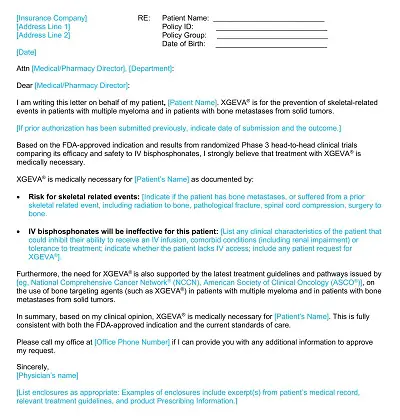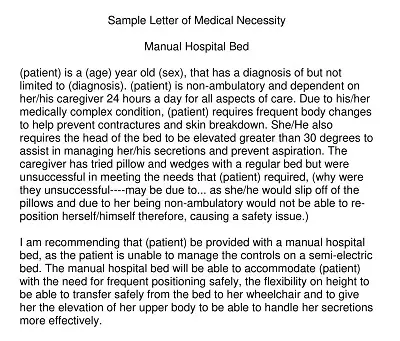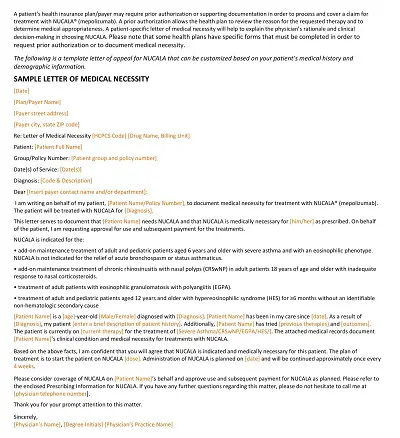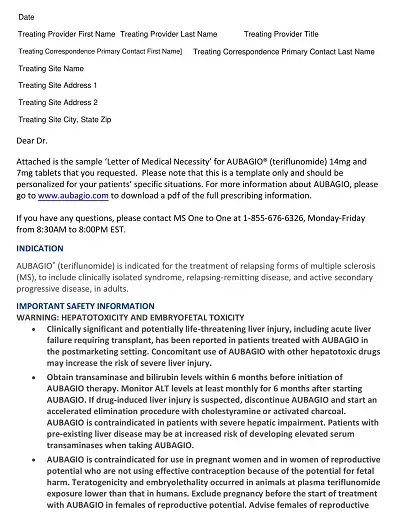25+ Free Sample Letter Of Medical Necessity Templates (PDF, DOC)
A Letter of Medical Necessity Template is a document generated by a healthcare provider outlining the patient’s medical condition and proposed treatment plan. This document serves to provide evidence to health insurance providers that justify why the proposed treatment is medically necessary for the individual patient. It often includes information about previous medical histories, current symptoms and diagnoses, treatments already attempted, and the outcomes achieved.
Table of Contents
In addition, the Letter of Medical Necessity Template may include an explanation of why the insurer should cover or partially cover the cost of treatment. If accepted by the insurer, this document can be an invaluable tool in helping to obtain coverage for necessary medical care.
Download Free Sample Letter Of Medical Necessity Templates
Who Needs a Letter of Medical Necessity and When?
A letter of medical necessity is required for any medical treatment or device that is used to treat a medical condition. It is most commonly used to explain why someone needs specific medication, equipment, or services from their insurance provider. In the letter, a doctor typically outlines the patient’s medical history and current condition, as well as how the proposed medical treatment or device will improve the person’s health.
In some cases, an appeal can also be made if other forms of treatment have been ruled out. Letters of medical necessity are particularly important when filing a claim with health insurance companies as they can often reject claims without one.
Essential Components of a Letter of Medical Necessity
Writing a letter of medical necessity is an important step for people seeking coverage for specific medical treatments or services. A comprehensive and well-constructed letter of medical necessity should include pertinent information related to the patient’s diagnosis, treatment plan, and current level of functioning. It should be written in a clear, concise manner that is easily understood by review personnel so they may quickly consider whether the proposed treatment is medically necessary or not.
Additional essential components include previous treatment attempts, diagnostic testing results and outcomes, expected length of needed care, justification of requested services concerning best practice standards, and proof that the proposed service is medically necessary given the patient’s diagnosis and clinical condition. Carefully compiling all required information per applicable payer requirements can increase the likelihood of favorable decisions regarding coverage for the desired service or treatment.
How to submit a Letter of Medical Necessity?
Submitting a Letter of Medical Necessity is a complex process, but it doesn’t have to be. Knowing the right steps and compiling the required information can make all the difference when trying to secure medical coverage. Begin by gathering all necessary documents including proof of diagnosis and relayed medical history. When constructing the letter, be sure to focus on providing specifics like relevant dates, supporting medical evidence, and contact information.
The most important step is to ensure that all requested information is presented leaving out critical or needed data can severely curtail chances for success. After completing the letter, double-check it for accuracy before submission, this will give you greater confidence that your request for coverage will be approved.
Ultimate Guide on How to Create a Letter of Medical Necessity Template
A Letter of Medical Necessity (LMN) is a document written by a healthcare provider to support the medical necessity of a specific treatment or equipment that is not covered by insurance. Drafting an effective LMN requires careful planning and attention to detail. A well-prepared Letter of Medical Necessity can be a valuable tool in streamlining the process of writing this type of document. In this ultimate guide, we will provide you with everything you need to know about how to create a letter of medical necessity template.
- Identify the key components of an LMN: Before you start creating a template, it’s essential to identify the key sections that must be included in an LMN. These typically include the patient’s medical history, diagnosis, medical necessity, recommended treatment or equipment, and supporting documentation, such as medical research or peer-reviewed journals.
- Customize the template: The LMN template should be customized to fit the specific needs of your practice, the patient, and the treatment or equipment you are requesting. This may involve adding or removing sections, changing the language to suit your preferred tone, and formatting the document in a way that is easy to read and understand.
- Incorporate sample language: To make the process of writing an LMN template easier, it can be helpful to include sample language that can be customized for each patient. This may include common phrases, medical terminology, and explanations of medical conditions. You can collect this information over time by reviewing past LMNs that you have written.
- Review and update the template regularly: As medical research advances and insurance policies change, the LMN template will need to be updated to reflect the latest information. Make sure to review and update the template regularly to ensure that it remains accurate and up to date.
- Share the template with your team: Once you have created a template, it’s valuable to share it with your team of healthcare providers. This can help ensure that everyone is using the same language and format, leading to more consistency and efficiency in the LMN process.

















